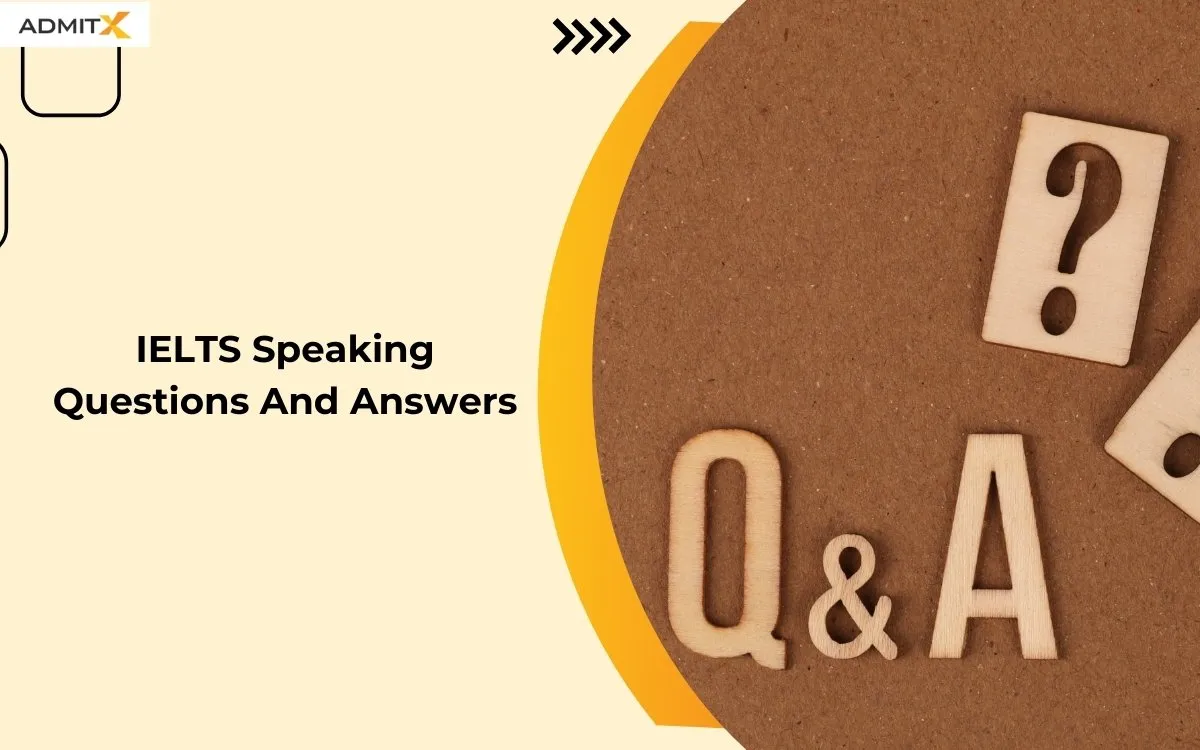
GRE Syllabus 2024: Test Format and Eligibility
The GRE acts as a key to unlocking many graduate programs. It checks your skills in three critical areas to see if you’re ready for more challenging academic work. Verbal Reasoning determines how well you understand complex reading materials and use vocabulary. The Quantitative Reasoning part tests your problem-solving abilities using basic math concepts. Finally, the Analytical Writing part assesses your critical thinking and writing skills by asking you to analyze an issue and build a strong argument.
Understanding these three crucial sections of the GRE syllabus in 2024 is the first step towards preparing for the exam and showing graduate schools that you’re prepared for their programs.
GRE Test Format
The GRE syllabus for 2024 has two options to assess your readiness for graduate programs:
- GRE General Test: This is the most common GRE format. It’s a standardised exam that evaluates your core academic abilities in three areas: verbal reasoning, quantitative reasoning, and analytical writing. These skills are crucial for success in most graduate programs, regardless of your field.
- GRE Subject Test: This optional test delves deeper into subject areas like Mathematics, Physics, and Psychology. Some graduate programs require a Subject Test to assess your proficiency in their field. It demonstrates your in-depth knowledge and passion for a particular discipline.
Choosing the proper GRE test depends on the requirements of the graduate programs you’re applying to. Understanding this structure is the first step toward successful GRE results. GRE has been changed to a shortened version.
Shortened Version of GRE Format
In 2023, the Educational Testing Service (ETS) made the Graduate Record Exam (GRE) shorter. Rather than a 4-hour exam, test-takers now get a shorter exam that can be finished in under two hours, approximately half the duration of the previous version. Look out for the specific changes:
| Parameter | Changes |
|---|---|
| Duration | 1 hr 58 min |
| Test Structure | Removed the argument essay Removed the experimental (unscored) section Removed the 10-minute break Reduced the number of questions across the Quant sections from 40 to 27 Reduced the number of questions across the Verbal sections from 40 to 27 |
| Score Delivery Timing | ETS now sends GRE scores to institutions in 8-10 days instead of the former 10-15 day turnaround time. |
GRE Syllabus
Knowing the GRE syllabus for 2024 is crucial, as is mastering the test format. Even if you’ve memorised all the answers, poor time management can leave you rushing through sections or skipping questions. Here’s where understanding the format becomes essential:
- Three Key Sections: The GRE focuses on core academic skills through three sections: Analytical Writing, Verbal Reasoning, and Quantitative Reasoning.
- Computerised Test & Time Crunch: The computer-based GRE presents a tight timeframe of 1 hour and 58 minutes for the entire exam.
- Strategic Approach: Familiarise yourself with the format to develop a strategic approach. This includes knowing the number of sections, question types, and time allocated to each section.
By understanding the test format alongside the GRE syllabus for 2024, you can approach the GRE with confidence and a well-crafted time management strategy, maximising your chances of success. Here is a tabulated version of the GRE general test syllabus:
| Criteria | Total question | Types of questions | Duration | Score Range |
|---|---|---|---|---|
| GRE Verbal Reasoning | Section 1: 12 Questions Section 2: 15 Questions | Reading comprehension Text completion, Sentence equivalence | Section 1: 18 minutes Section 2: 23 minutes | 130-170 (in 1-point increment) |
| GRE Quantitative Reasoning | Section 1:12 Questions Section 2: 15 Questions | Geometry Algebra Arithmetic Data Analysis | Section 1: 21 minutes Section 2: 26 minutes | 130-170 (in 1-point increment) |
GRE Analytical Reasoning | 1 Section | Analyzing an Issue | 30 minutes | 0-6 (in 0.5 point increment) |
GRE Verbal Reasoning
The verbal reasoning section of the GRE syllabus for 2024 assesses your academic excellence through a variety of question types:
Content: Reading comprehension, Text completion, Sentence equivalence
Number of questions: 27 Questions
Time Duration: Section 1: 18 minutes, Section 2: 23 minutes
Types of Questions:
- Reading Comprehension: These questions, constituting roughly half the exam, present passages from diverse fields like science, social sciences, humanities, and everyday topics. Passages can be academic or non-academic, mirroring content found in books. You’ll answer one to six questions based on each passage, demonstrating your ability to comprehend complex texts and extract critical information.
- Sentence Equivalence: These questions test your vocabulary and reasoning skills. Each question presents a single sentence with a blank. Your task is to identify two answer choices that, when inserted, create grammatically correct and logically complete sentences with equivalent meanings.
- Text Completion: This section assesses your reading comprehension and ability to infer meaning. Short passages will have crucial words omitted. You must draw upon the remaining context to select words or phrases that effectively fill in the blanks, ensuring a coherent and meaningful passage.
Success in Sentence Equivalence and Text Completion questions rely heavily on a strong vocabulary. By familiarising yourself with these GRE topics and honing your vocabulary skills, you can effectively crack the GRE and showcase your academic excellence.
GRE Quantitative Section
The GRE Quantitative Reasoning section, or the GRE maths syllabus, assesses your understanding of fundamental maths concepts typically covered in high school. It emphasises problem-solving skills and critical thinking, not advanced maths like calculus or trigonometry.
Content: Geometry, Algebra, Arithmetic, Data Analysis
Number of questions: 27 Questions
Time Duration: Section 1: 21 minutes, Section 2: 26 minutes
Here’s a quick breakdown of the essential topics tested:
- Arithmetic: Basic operations, properties of integers (divisibility, prime numbers, etc.), percentages, ratios, rates, absolute values, and number sequences.
- Algebra: Exponents, factoring, equations & inequalities (linear and quadratic), solving word problems using algebraic concepts, and coordinate geometry (graphs, intercepts, slopes).
- Geometry: Lines, circles, triangles, quadrilaterals, other polygons, 3D figures, area, perimeter, volume, Pythagorean Theorem, and angle measurement.
- Data Analysis: Descriptive statistics (mean, median, mode, etc.), interpreting data visualisations (graphs, charts), basic probability concepts, and counting methods (combinations, permutations).
A strong foundation in these core mathematical concepts is essential for success in the GRE Quantitative Reasoning section.
GRE Analytical Reasoning
The GRE Analytical Writing section evaluates your ability to think critically and express your ideas effectively in written form. This section does not assess your knowledge of any specific subject area.
Content: Analysing an Issue
Number of questions: 1
Time Duration: 30 minutes
Here’s a breakdown of the critical skills tested:
- Clear and Effective Communication: You’ll be assessed on your ability to articulate complex ideas clearly, concisely, and in an organised way .
- Supporting Arguments: Developing reasonable arguments with relevant and convincing examples is crucial for success.
- Focused and Coherent Discussion: Maintaining a clear focus throughout your writing and ensuring a logical flow of ideas is essential for a robust analytical response.
- Standard Written English: The test evaluates your grammar, punctuation, and sentence structure skills.
The Analytical Writing section consists of a single task:
- Analyse an Issue: You’ll be presented with a broad issue or topic and asked to develop a focused and well-reasoned argument in response.
Also read – GRE Compelete Guide
GRE Subject Test
As of September 2023, all GRE Subject Tests, including Mathematics, Physics, and Psychology, will be administered exclusively on computers. The test durations vary by subject: Mathematics takes 2 hours and 50 minutes, while Physics and Psychology are 2 hours long. It’s important to note that no separate timed sections are within any of the GRE Subject Tests. Here is a tabulated version of the subject test syllabus:
| Subject | GRE Exam Syllabus | No. of Questions |
|---|---|---|
| Maths | Arithmetic Geometry Data Analysis Algebra | 66 MCQs |
| Physics | Classical Mechanics Electromagnetism Optics and Wave Phenomena Thermodynamics and Statistical Mechanics Quantum Mechanics Atomic Physics Special Relativity Laboratory Methods Specialised Topics | 70 5-choice questions |
| Psychology | Biological Cognitive Developmental Social Clinical Measurement/Methodology/Other | Approximately 144 MCQs |
GRE Eligibility Criteria
The GRE offers open arms to aspiring graduate students! There are no specific eligibility requirements for the exam, meaning anyone can take it regardless of age or academic background. However, it’s important to remember that this openness doesn’t extend to universities and programs. Each institution may have criteria, such as minimum GPA or specific coursework completion. So, while the GRE welcomes all, research the programs you’re targeting to ensure you meet their unique requirements. As for taking the GRE, these documents are necessary:
- A valid passport with a photo and signature is your key to registration and test day.
- A government-approved ID for verification.
Resources to Prepare for GRE
Mastering the GRE involves building a strong foundation of knowledge and strategies. Each concept learned is like a tool added to your toolbox. To ensure you have the right tools, use various reliable resources from the beginning. Excellent books can introduce you to the GRE format, sections, timing, and key approaches. You can get help from these books:
Also read – GMAT or GRE Which one should I take
Conclusion
In conclusion, while a high GRE score can be impressive, remember it’s just one milestone for admissions or landing your dream job. Utilise practice tests to sharpen your test-taking skills and pinpoint areas that need work. Develop a strong reading habit to enhance your verbal abilities and analytical thinking. Finally, prioritise mastering the basics of maths in the quantitative section. By following these steps and showcasing your comprehensive strengths, you’ll be well-prepared to tackle the GRE and make a strong impression on admissions committees or future employers.
FAQs
What is the order of sections in the GRE?
The GRE General test always begins with Analytical writing, followed by Verbal and quantitative reasoning.
What is the ideal GRE score to get into top universities?
The typical GRE score for leading universities differs based on the program and your academic history. Still, achieving a score of 310 or higher is typically seen as acceptable.
How many times can I appear for the GRE test?
Candidates are allowed to take the GRE General Test every 21 days, with a maximum of five times within a 12-month period.
If you are an aspirant looking to study at your dream university, book an appointment with AdmitX today and start your applications early to avail yourself of all the benefits.








